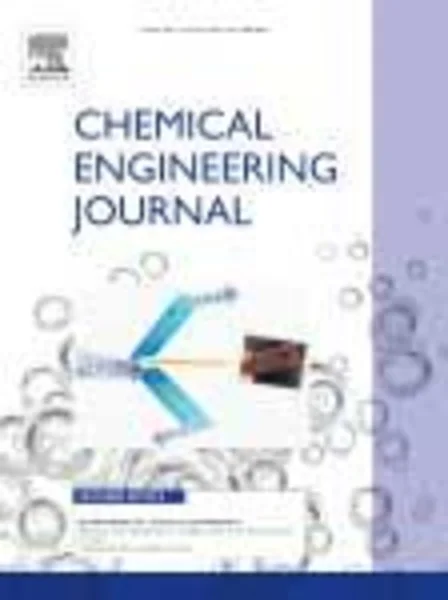-
fish bone derived natural hydroxyapatite-supported copper acid catalyst: taguchi optimization of semibatch oleic acid esterification
جزئیات بیشتر مقاله- تاریخ ارائه: 1392/01/01
- تاریخ انتشار در تی پی بین: 1392/01/01
- تعداد بازدید: 763
- تعداد پرسش و پاسخ ها: 0
- شماره تماس دبیرخانه رویداد: -
natural hydroxyapatite (nhap) derived from waste fish (lates calcarifer) bone has been effectively utilized as a support for preparation of low-cost, recyclable, heterogeneous copper acid catalyst. the novel catalyst has been prepared through wet-impregnation method involving tungsten–halogen-irradiation assisted freeze-drying. the catalyst was characterized through tga, sem, xrd, bet–bjh and ftir analyses. the catalyst possessed 16.78 m2/g specific surface area, 0.0313 cc/g pore volume and 33.14 nm modal pore size with an acidity of 11.22 mmol koh/g catalyst. the developed acid catalyst demonstrated excellent efficacy in the semibatch esterification of oleic acid with ethanol. the taguchi robust design method (l9 orthogonal array) was applied to optimize process parameters governing oleic acid conversion. the maximum oleic acid conversion over a span of 1 h was 91.86% corresponding to the parametric values viz. 90 °c freeze-drying temperature, 1.0 weight ratio of copper nitrate to nhap, 0.8 ml/min ethanol flow rate and 1000 rpm stirrer speed. moreover, in situ water removal within the reactor through use of silica-gel desiccators could significantly enhance oleic acid conversion. the innovative cu–nhap catalyst demonstrated excellent reusability and regeneration characteristics. thus, the article explores an innovative and environmentally-benign utilization avenue of waste fish bone as a promising heterogeneous catalyst support.
مقالات جدیدترین رویدادها
-
استفاده از تحلیل اهمیت-عملکرد در ارائه الگوی مدیریت خلاقیت سازمانی و ارائه راهکار جهت بهبود
-
بررسی تاثیر ارزش وجوه نقد مازاد بر ساختار سرمایه شرکت های پذیرفته شده در بورس اوراق بهادار تهران
-
بررسی تأثیر سطح افشای ریسک بر قرارداد بدهی شرکت های پذیرفته شده در بورس اوراق بهادار تهران
-
بررسی تأثیر رتبه بندی اعتباری مبتنی بر مدل امتیاز بازار نوظهور بر نقد شوندگی سهام با تأکید بر خصوصی سازی شرکت ها
-
تأثیر آمیخته بازاریابی پوشاک ایرانی بر تصویر ذهنی مشتری پوشاک ایرانی (هاکوپیان)
-
بررسی تطبیقی ساختار مراکز مدیریت بحران در ایران و آمریکا
-
تحلیل و بررسی آماری داده های شاخص آلودگی هوای تهران از سال 1381 الی 1387
-
یادگیری مشارکتی در سیستم های چندعاملی بر مبنای خبرگی مرکب
-
synthesis of bifunctional mesoporous silica spheres as potential adsorbent for ions in solution
-
electrothermal performance of an activated carbon honeycomb monolith
مقالات جدیدترین ژورنال ها
-
مدیریت و بررسی افسردگی دانش آموزان دختر مقطع متوسطه دوم در دروان کرونا در شهرستان دزفول
-
مدیریت و بررسی خرد سیاسی در اندیشه ی فردوسی در ادب ایران
-
واکاوی و مدیریت توصیفی قلمدان(جاکلیدی)ضریح در موزه آستان قدس رضوی
-
بررسی تاثیر خلاقیت، دانش و انگیزه کارکنان بر پیشنهادات نوآورانه کارکنان ( مورد مطالعه: هتل های 3 و 4 ستاره استان کرمان)
-
بررسی تاثیر کیفیت سیستم های اطلاعاتی بر تصمیم گیری موفق در شرکتهای تولیدی استان اصفهان (مورد مطالعه: مدیران شرکتهای تولیدی استان اصفهان)
-
ویژگیها، تشخیص و روش های درمان ساس تختخواب به عنوان یک مشکل بهداشتی رو به رشد در مکان های عمومی
-
قلمرو جهانی شدن و مسئله ارتباطات انسانی
-
شناسایی و رتبه بندی عوامل مؤثر برافزایش و کاهش انگیزه کارکنان شهرداری منطقه 1 شهرستان خرم آباد
-
بررسی حسابداری منابع انسانی بعنوان ابزار قدرتمند و با ارزش یک سازمان
-
the evaluation of temporary shelter areas locations using geographic information system and analytic hierarchy process




سوال خود را در مورد این مقاله مطرح نمایید :